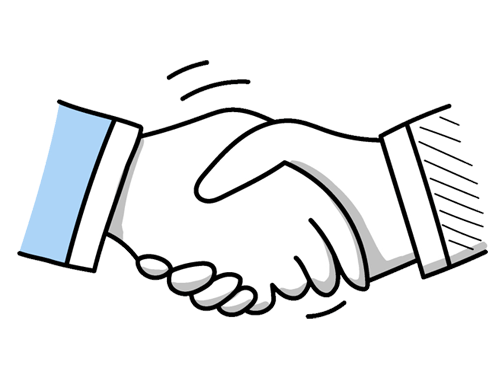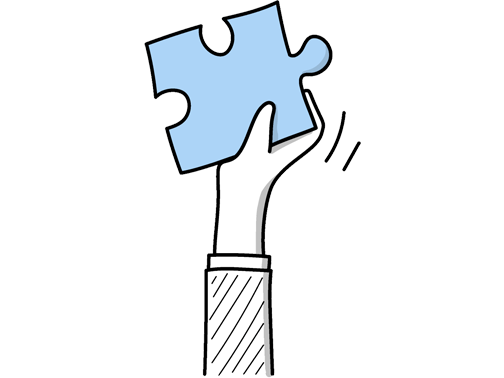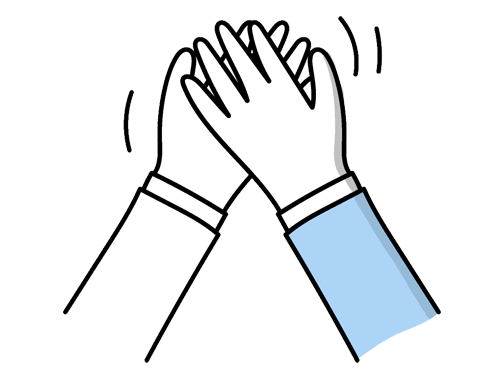Forest Firefighter Interview Questions (2025 Guide)
Find out common Forest Firefighter questions, how to answer, and tips for your next job interview
Practice Interviews Online - Identify your strengths and weakness in a realistic Forest Firefighter mock interview, under 10 minutes
Practice Now »Forest Firefighter Interview Questions
This question helps assess your physical endurance, strength, and resilience in demanding situations critical for forest firefighting. You need to describe a specific tough scenario, explain how you managed your physical limits with strategies like pacing or breaks, and highlight your determination to overcome the challenge.
Example: During a summer trail maintenance project, I spent long hours hauling heavy equipment uphill in intense heat. To manage fatigue, I paced myself, stayed hydrated, and took short breaks to keep energy steady. Despite the discomfort, I remained focused on the task, pushing through until the job was done. That experience taught me the importance of mental strength alongside physical effort in demanding environments.
This question reveals how you think and act under pressure, which is crucial for safety and effectiveness in firefighting. You need to say that you quickly assess the situation and fire behavior, adapt your tactics as conditions change, and reflect afterward to learn and improve.
Example: When unexpected challenges arise during a fire, I focus on quickly grasping the situation to identify key risks. Staying calm helps me choose practical actions that work in the moment, like adjusting tactics if wind changes direction. I also reflect afterward, learning from what happened to handle future fires more effectively. For example, adapting my approach after a sudden flare-up ensured better safety on the next call.
Interviewers ask this question to see how you measure success and learn from your actions in high-pressure situations. You need to explain how you compare the results of your strategies with your goals, seek feedback from your team, and use these insights to improve future responses.
Example: When tackling a challenge, I look at how well the result matches what we aimed for and gather thoughts from the team to understand different perspectives. For example, after tackling a controlled burn, I check in with crew members to see what worked and what could be smoother next time. This reflection helps me fine-tune my approach so each response becomes more effective and efficient.
Questions like this assess your ability to work effectively within a high-pressure team environment, which is crucial in forest firefighting. You need to explain how you communicated clearly, coordinated roles based on strengths, and solved problems together during the operation.
Example: During a recent wildfire, our team kept constant communication to adapt quickly as conditions changed. Each member knew their role, from water supply to firebreak construction, which helped us contain the flames efficiently. When unexpected wind shifts occurred, we regrouped, reassessed, and adjusted our approach on the spot. That collaboration under pressure was key to bringing the fire under control safely and effectively.
Questions like this assess your ability to maintain clear communication and ensure team safety in high-risk situations. You need to explain that you use real-time radio updates and a tracking system to monitor your team’s locations and conditions consistently.
Example: During a fire, I rely on a mix of clear radio communication and regular check-ins to know where everyone is and how they’re doing. We use pre-planned routes and visual landmarks to stay oriented. For example, on my last assignment, quick updates over the radio helped us adapt to shifting wind conditions, keeping the team safe and coordinated throughout the operation.
Employers ask this to ensure you understand the physical demands of firefighting and are proactive in maintaining your fitness. You need to say that you follow a regular, rigorous exercise routine focusing on strength, endurance, and flexibility to stay ready for the intense work during fire season.
Example: To get ready for fire season, I focus on building endurance through regular runs and strength training, especially targeting core and upper body. I also practice carrying heavy loads to simulate gear weight, and work on flexibility to prevent injuries. Staying hydrated and maintaining a balanced diet helps me recover quickly. Last year, consistent morning workouts made a real difference when I was on long shifts in tough conditions.
Hiring managers ask this question to see if you can communicate clearly and stay organized under pressure, which is critical for safety and teamwork during a fire. You need to say that you use simple, direct language, listen carefully to your team’s feedback, and assign clear roles based on each person’s strengths to keep everyone safe and efficient.
Example: During a fire, I focus on keeping instructions straightforward and direct to avoid confusion. I make sure to listen carefully to any concerns or updates from teammates and respond quickly to keep everyone on the same page. For example, in a recent drill, we assigned specific roles early, which helped us move efficiently and stay safe despite rapidly changing conditions. Clear, calm communication really makes all the difference in those moments.
Questions like this assess your understanding of fire prevention tactics and your ability to plan strategically under pressure. You need to explain how you clear vegetation and combustible material to create a barrier that stops or slows the fire’s spread, while considering terrain, wind, and safety.
Example: Creating a firebreak involves clearing a strip of vegetation and debris to stop a fire from spreading. Typically, we remove trees, brush, and dry leaves down to bare soil, which acts as a barrier. In practice, this might mean using hand tools or machinery to widen existing paths or create new ones. It’s a crucial step to control and contain wildfires effectively.
Interviewers ask this to see if you understand how different elements affect fire growth and safety. You need to mention assessing wind direction and speed, examining fuel type and moisture, and monitoring weather like temperature and humidity.
Example: When assessing fire behavior, I focus on the surrounding environment—like the type and amount of vegetation that could feed the flames. Weather plays a big role too; shifts in wind or humidity can change how quickly a fire spreads. For example, dry, windy days often accelerate fires, while damp conditions may slow them down. Understanding these elements helps predict and manage fire effectively in the forest.
This interview question assesses your dedication to staying physically prepared for the demanding tasks of forest firefighting. In your answer, explain your consistent workout routine focused on strength and endurance, and how you fit this training into your daily life while understanding the physical challenges like carrying heavy gear over rough terrain.
Example: I stay fit by making regular exercise part of my routine, whether it’s running or strength training, to handle long hours and tough terrain. I also find ways to fit workouts around my schedule, like early morning hikes or cycling after work. Understanding how physical endurance and agility are crucial in forest firefighting helps me stay motivated and focused on maintaining the right level of fitness.
Hiring managers ask this to assess your problem-solving skills and ability to stay calm under pressure during critical situations. You need to describe a specific challenge you faced, the actions you took to address it, and how your solution helped control or reduce the fire's impact.
Example: During a recent wildfire, I noticed that our water supply was running low. I quickly coordinated with nearby teams to redirect resources and set up an emergency refill point. This swift action helped maintain our firefighting efforts without interruption, preventing the fire from spreading further into residential areas. It was a clear reminder that staying calm and thinking ahead can make all the difference in controlling a fast-moving blaze.
Hiring managers ask this to see if you can adapt quickly and prioritize safety in dynamic environments. You need to say you constantly monitor weather, communicate with your team, and stay alert to smoke, wind, and terrain changes to make informed decisions.
Example: Staying alert to shifting fire conditions means constantly observing the environment—watching wind changes, smoke patterns, and moisture levels. I keep in close contact with the team, sharing updates and listening to reports. On past calls, this approach helped us anticipate sudden flare-ups and adjust our strategy quickly, keeping everyone safer and the fire more controlled.
This interview question assesses your awareness of the physical demands of firefighting and your ability to maintain stamina and focus. You need to explain that you plan ahead by carrying enough water and high-energy snacks, and regularly take breaks to hydrate and eat to keep your energy levels stable.
Example: During long shifts, I prioritize regular water intake, sipping consistently rather than waiting until I feel thirsty. I pack high-energy snacks like nuts and dried fruit to keep my energy steady without feeling heavy. Taking short breaks to eat and hydrate helps me stay focused and alert, especially in tough conditions. It's about balancing fuel and fluids so I can perform at my best throughout the day.
This interview question assesses your ability to manage high-pressure situations by prioritizing effectively to protect lives and resources. You need to explain how you evaluate the severity of each problem, communicate priorities clearly with your team, and adjust your plan quickly as conditions change.
Example: When facing several issues at once, I quickly gauge which situation poses the greatest risk and address that first. I keep the team informed to ensure everyone’s efforts align and adjust plans if things change unexpectedly. For example, during a recent wildfire, while directing water crews, I stayed alert to shifting winds and reallocated resources to prevent flare-ups, keeping both the team and the forest safe.
Questions like this assess your understanding of the physical demands and stamina required for forest firefighting. You need to explain a balanced routine that builds cardiovascular endurance, strength, and agility to handle tough terrain and heavy equipment effectively.
Example: A typical training day focuses on building endurance, strength, and agility—key for tough terrain and heavy gear. Mornings might start with a run or hike to boost stamina, followed by circuit training including lifting, dragging weighted objects, and simulated carry drills. We also practice climbing and using tools. This variety keeps us ready for the unpredictable demands of fighting forest fires.
Questions like this assess your ability to stay alert and adapt to changing conditions to keep yourself and your team safe. You need to explain that you constantly monitor environmental changes, identify risks early, and communicate promptly with your team to prevent accidents and injuries.
Example: Situational awareness is key in forest firefighting because conditions can change quickly. Staying alert to shifts in wind, terrain, or fire behaviour helps spot hazards before they escalate. It also means sharing observations clearly with the team so everyone can adjust plans together. For example, noticing smoke direction changes early on can prevent being caught off guard and keeps everyone safer on the ground.
Interviewers ask this question to see how you handle unexpected challenges and think on your feet in high-pressure situations. In your answer, briefly describe the problem, the creative solution you devised, and the positive outcome it achieved.
Example: During a wildfire in a remote area, traditional water drops were limited. I suggested using controlled backburns to create natural firebreaks, which helped contain the fire’s spread effectively. This approach required quick coordination and close communication with the team but ultimately minimized damage and protected nearby habitats. It was a practical solution that balanced urgency with safety, showing how adapting tactics can make a real difference in tough situations.
Hiring managers ask this question to see if you understand the tools essential for safety and effectiveness in firefighting. You need to mention common equipment like fire shelters, chainsaws, hoses, protective clothing, and communication devices, showing you know how each helps control fires and protect the team.
Example: When tackling forest fires, I rely on tools like hand tools—shovels, pulaskis, and rakes—to create firebreaks. Water pumps and hoses help control flames when terrain allows. Personal safety gear, such as helmets, gloves, and flame-resistant clothing, is essential. Communication devices keep the team coordinated. For example, during a recent wildfire, clear radio contact and proper gear made all the difference in managing the blaze safely and efficiently.
Hiring managers ask this to see if you understand different fire suppression methods and can apply them safely and effectively in the field. You need to explain key techniques like using water and foam for containment, when to use hand tools for smaller fires, and how you balance fire control with protecting the environment and your safety.
Example: In forest firefighting, I use several suppression techniques depending on the situation. Water and foam help cool flames quickly, while creating firebreaks—clearing vegetation to stop fire spread—is effective in controlling larger areas. Controlled backburning can reduce fuel ahead of the fire. Throughout, I stay mindful of safety by assessing wind and terrain and aim to protect the environment by minimizing soil disturbance and preserving wildlife habitats.
This question helps assess your ability to prioritize safety and make quick, informed decisions in a high-risk environment. You need to explain that you evaluate hazards like fire intensity, wind, and terrain, identify escape routes, and communicate your assessment clearly to your team.
Example: Before entering a fire zone, I take a close look at how the fire is moving, the wind, and the land shape to spot any quick dangers. I also check the tools and paths available for a safe exit, like knowing where the nearest clear routes are. Then, I share this info with my team so everyone’s aware and can act quickly if things change—like we did during a woodland blaze last year where quick communication was key.
This question helps assess your teamwork and communication skills under stress, crucial for safety and effectiveness in firefighting. You need to say that you listen carefully to understand all views, stay calm to ease tensions, and collaborate to find solutions that work for the whole team.
Example: When disagreements arise, I make a point to listen carefully to everyone involved to fully grasp their views. Staying composed helps keep the situation from escalating. Then, I focus on finding a solution that works for the whole team, often by encouraging open discussion and shared responsibility. In a previous role, this approach helped us quickly resolve a safety concern without disrupting our work.
Employers ask this question to see how you create a strong, united team in high-pressure situations. You need to say that you communicate clearly and regularly, show reliability by being prepared and punctual, and build respect by recognizing each team member’s efforts.
Example: Building trust starts with clear, open communication—making sure everyone’s on the same page before heading into challenging situations. I always make it a point to back my words with action, so teammates know they can count on me. I also try to acknowledge each person’s effort, whether during a tough job or downtime, which helps create a positive atmosphere where everyone feels valued and motivated to work together.
This question assesses your ability to stay alert and make fast, effective decisions in high-pressure, potentially dangerous situations. You need to explain a specific moment when you noticed important changes in your environment and quickly took action to ensure safety or solve a problem.
Example: During a summer wildfire, the wind suddenly shifted direction. Noticing this, I quickly ordered the team to change our approach and create a wider containment line to prevent the fire from spreading toward a nearby village. Acting on that awareness helped us control the blaze more effectively and ensured everyone’s safety. It reinforced how crucial staying alert and adaptable is in fast-moving situations.
Questions like this assess your commitment to continuous learning and staying current with evolving firefighting techniques. You need to explain that you regularly attend workshops or training sessions, keep up with new equipment and methods, and actively apply this knowledge in practical scenarios.
Example: I make it a point to regularly read industry journals and follow updates from firefighting organisations like the National Fire Chiefs Council. Attending workshops and training sessions helps me stay sharp and apply new techniques in the field. For example, I recently learned how to use thermal imaging cameras more effectively, which has improved both safety and efficiency during wildfire operations. Staying informed makes a real difference out there.
Questions like this assess your ability to collaborate and communicate effectively in high-pressure situations. You need to explain a specific example where you coordinated with different teams, highlighting your teamwork and adaptability.
Example: In a previous role during a large wildfire, I coordinated closely with local fire services and environmental agencies to manage evacuation routes and protect wildlife habitats. We held regular briefings to share updates and resources, which helped us respond quickly and effectively. That teamwork was vital in keeping both the community and the forest safe. It taught me the importance of clear communication and mutual support in high-pressure situations.
Ace your next Forest Firefighter interview with even more questions and answers
Common Interview Questions To Expect
The interviewer is looking for a brief overview of your background, experience, and skills relevant to the position. Focus on your passion for firefighting and any related training or certifications.
Example: Well, I've always had a passion for helping others and protecting the environment, which is why I decided to become a forest firefighter. I have completed training in fire behavior, wildfire suppression techniques, and first aid. I also hold certifications in chainsaw operation and wilderness survival.
The interviewer is looking for qualities that are relevant to the job, such as physical fitness, problem-solving skills, teamwork, and resilience. It's important to provide specific examples to support your strengths.
Example: My biggest strengths are my physical fitness, problem-solving skills, and ability to work well in a team. For example, during a recent forest fire, I was able to quickly assess the situation and come up with a plan to contain the fire. I also worked closely with my team to ensure we were all on the same page and working efficiently together.
The interviewer is looking for a clear explanation of the reasons behind your decision to change career paths. Be honest, highlight relevant skills, and show how your new career aligns with your goals.
Example: I decided to change career paths because I wanted a more hands-on and physically demanding job. As a forest firefighter, I can use my problem-solving skills and work in a team to protect the environment. This career aligns with my passion for nature and helping others in times of need.
The interviewer is looking for examples of how you prioritize tasks, manage your time effectively, and handle stress in a fast-paced environment. Be prepared to provide specific examples from your past experiences.
Example: Yes, I am able to handle multiple responsibilities at once. In my previous role as a forest firefighter, I had to prioritize tasks such as extinguishing fires, rescuing animals, and coordinating with other team members. I have developed strong time management skills and can handle stress well in fast-paced environments.
The interviewer is looking for insight into your personal drive and passion for the job. You can answer by discussing your love for the outdoors, desire to protect the environment, or commitment to helping others.
Example: What motivates me is my passion for the outdoors and my love for nature. I am driven by the desire to protect the environment and make a positive impact on the world. Helping others and ensuring the safety of communities is what keeps me going in this career.
Company Research Tips
The company's official website is a goldmine of information. Look for details about the company's mission, values, culture, and history. Pay special attention to any sections dedicated to their forest firefighting operations. This can give you insights into their procedures, equipment, and training programs. Also, check if they have any recent news or press releases related to forest firefighting. This can give you an idea of their current projects and future plans.
Tip: Don't just skim through the website. Take notes and try to understand how the company operates. Look for any unique aspects that set them apart from other similar organizations.
Social media platforms can provide a more informal view of the company. Check their profiles on platforms like LinkedIn, Facebook, and Twitter. Look for any posts related to their forest firefighting operations. This can give you insights into their day-to-day activities and how they interact with the public. Also, check the comments and reviews to see what people are saying about them.
Tip: Follow or like their profiles to stay updated with their latest posts. Also, look for any common themes or recurring topics in their posts. This can give you an idea of their priorities and focus areas.
Look for industry reports and news articles related to forest firefighting in the UK. This can give you an idea of the current trends, challenges, and opportunities in the industry. Also, look for any mentions of the company in these reports and articles. This can give you an idea of their reputation and standing in the industry.
Tip: Use search engines and databases like Google Scholar, JSTOR, and ProQuest for your research. Use keywords like 'forest firefighting', 'UK', and the company's name for your search.
Try to connect with current or former employees of the company. They can provide insider information about the company's operations, culture, and hiring process. You can find them through LinkedIn or industry events. Be respectful and professional in your approach. Explain that you're interested in working for the company and would appreciate any insights they can provide.
Tip: Prepare some specific questions in advance. This shows that you've done your research and are serious about the opportunity. Also, remember to thank them for their time and insights.
What to wear to an Forest Firefighter interview
- Clean, well-fitted jeans or trousers
- Comfortable, polished shoes
- Casual button-down shirt
- Lightweight jacket or sweater
- Avoid flashy or bright colors
- Ensure clothes are ironed
- Minimal jewelry and accessories
- Neat and tidy hairstyle
- Clean, trimmed nails
- Avoid strong perfumes or colognes





